- Anthony D'Amico
- Albums and Singles
 This is the debut album from a Berlin-based foursome dedicated to performing the works of Malaysian-born composer/trombonist Rishin Singh. Notably, Singh is also a member of Konzert Minimal, which is a modern classical ensemble dedicated to performing compositions by the Wandelweiser collective. In a 2016 New Yorker profile of the Wandelweiser milieu, Alex Ross noted that one recurring theme in their work is a "ghost tonality never achieves stability; it will frustrate those who expect one chord to lead logically to another." Singh's own vision shares a lot of similar stylistic terrain, as A Fog Like Liars Loving is nothing if not ghostly (and creepy (and unsettling)). It resembles an alternate universe version of Low in which they were a chamber music ensemble that listened to a steady diet of nothing but Jandek, Scott Walker, Marble Index-era Nico, and warped old folk records played at the wrong speed. That said, Singh definitely has an unusually sophisticated sensibility regarding dissonant harmonies and the entire album has an eerily nocturnal, dread-soaked, and somnambulant feel that is uniquely Leider's own. Purportedly, the album also features an "understated gallows humor," which is also an achievement of sorts, as Singh has managed to cultivate a strain of black humor so bleak that even I often have a hard time detecting it.
This is the debut album from a Berlin-based foursome dedicated to performing the works of Malaysian-born composer/trombonist Rishin Singh. Notably, Singh is also a member of Konzert Minimal, which is a modern classical ensemble dedicated to performing compositions by the Wandelweiser collective. In a 2016 New Yorker profile of the Wandelweiser milieu, Alex Ross noted that one recurring theme in their work is a "ghost tonality never achieves stability; it will frustrate those who expect one chord to lead logically to another." Singh's own vision shares a lot of similar stylistic terrain, as A Fog Like Liars Loving is nothing if not ghostly (and creepy (and unsettling)). It resembles an alternate universe version of Low in which they were a chamber music ensemble that listened to a steady diet of nothing but Jandek, Scott Walker, Marble Index-era Nico, and warped old folk records played at the wrong speed. That said, Singh definitely has an unusually sophisticated sensibility regarding dissonant harmonies and the entire album has an eerily nocturnal, dread-soaked, and somnambulant feel that is uniquely Leider's own. Purportedly, the album also features an "understated gallows humor," which is also an achievement of sorts, as Singh has managed to cultivate a strain of black humor so bleak that even I often have a hard time detecting it.
I never would have guessed on my own that this album was written by a male trombonist, as the most prominent threads that run throughout these songs are the dual female vocals of Annie Gårlid and Stine Sterne, the moaning strings, and the curdled, murky flutes. All are abundant in the creeping fog of dread and hanging dissonance that is the opening "The Weeping Wound," but the quartet's blurred gloom is also imbued with a sense of insistent (if glacial) forward motion by a simple drum machine pattern. Ironically, it is often that minimal drum machine element that determines how well a song works, as the compositions themselves are so purposely wraithlike and alienating that even the slightest rhythm feels like a welcome injection of life and physicality (akin to a still-beating heart faintly thumping within a corpse). When that beat disappears, Leider approximate a traditional folk ensemble from an earlier era that has been exhumed, reanimated, and handed rotted, mis-tuned instruments…and then asked to envision what The Wicker Man soundtrack would sound like if it had been an Ingmar Bergman film. That said, one of those beatless pieces is arguably the album's bleakly compelling centerpiece, as "Great Expectations" transforms a few lines of Dickens into a menacing dirge that erupts into a visceral, squealing catharsis. "Colder Underground" is another dirge/highlight, calling to mind a time-stretched Celtic folk ensemble accompanied by a slowly beating heart. It even has a hook, as the repeating refrain of "do you find it funny?" is surprisingly catchy and also feels like the final thing I might hear before being murdered by a coven of forest witches. I suspect I would probably like the rest of the album considerably more if it were less relentlessly dour (it makes for difficult entertainment), but Singh's focused vision feels like a promising success as art, as I can easily imagine an installation based on this album being a macabre sensation at a contemporary art museum.
Samples can be found here.
Read More
- Anthony D'Amico
- Albums and Singles
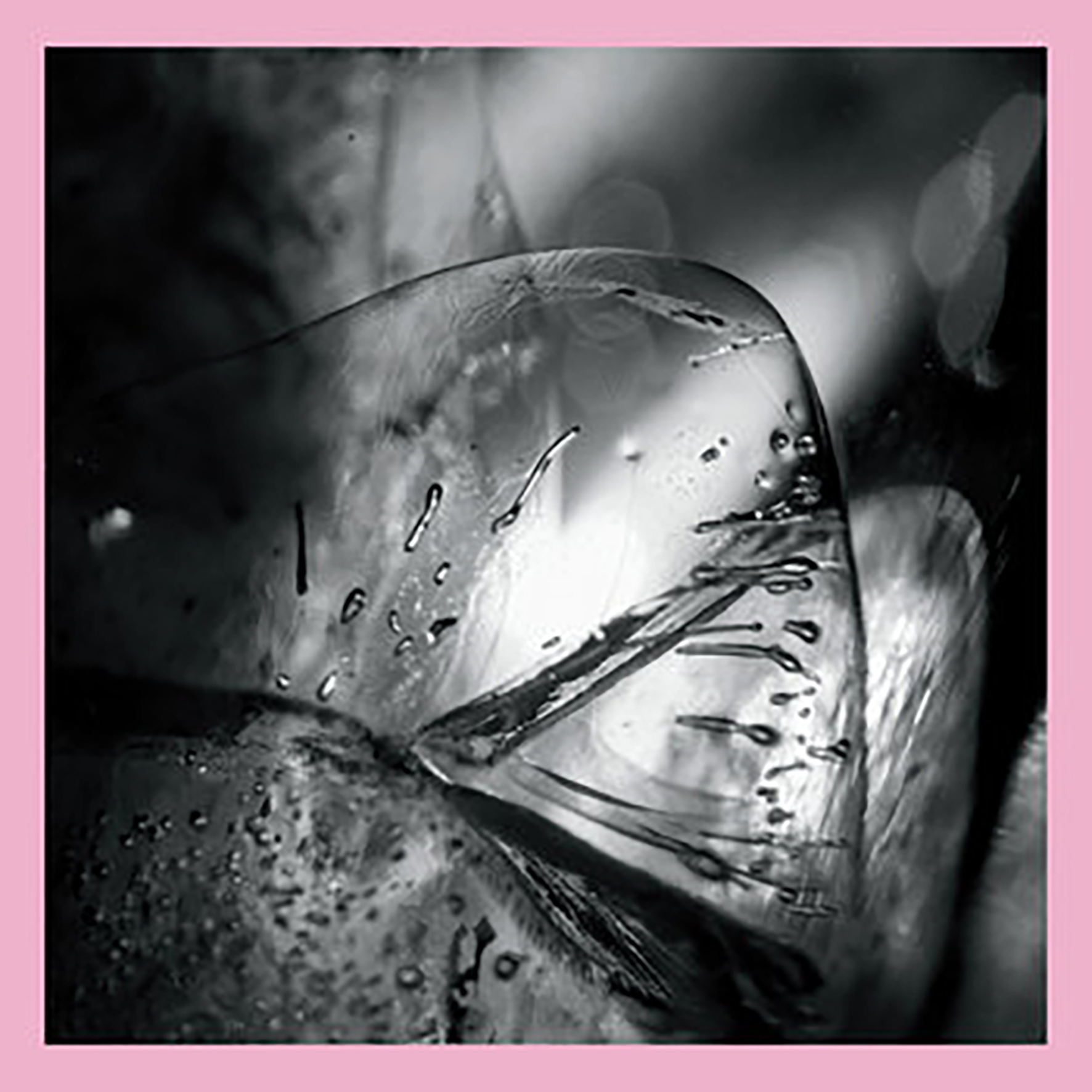 This latest release from Scott Morgan’s long-running loscil project is a bit of a conceptual detour from his usual fare, as the entire album was "sourced from a single three-minute composition performed by a 22-piece string orchestra in Budapest." That is not all, however, as that brave composition's unconventional journey also included an intermediate stage in which it was "lathe-cut on to a 7-inch, then 'scratched and abused to add texture and color.'" Despite those unusual origins, Clara still sounds exactly like a loscil album, as Morgan is nothing if not consistent. In this case, that basically translates as "a slow-motion dub techno album lurking behind a grayscale ambient fog," but the magic lies in the execution (as always) and Morgan has never been a slouch in that regard. In fact, he succeeds on two fronts with this release, as Clara is both another fine loscil album and an impressive feat of inventive de-/ re-construction, as Morgan managed to transform three minutes of music into a varied, absorbing, and dynamically satisfying album-length statement (and he made it all seem effortless and natural to boot).
This latest release from Scott Morgan’s long-running loscil project is a bit of a conceptual detour from his usual fare, as the entire album was "sourced from a single three-minute composition performed by a 22-piece string orchestra in Budapest." That is not all, however, as that brave composition's unconventional journey also included an intermediate stage in which it was "lathe-cut on to a 7-inch, then 'scratched and abused to add texture and color.'" Despite those unusual origins, Clara still sounds exactly like a loscil album, as Morgan is nothing if not consistent. In this case, that basically translates as "a slow-motion dub techno album lurking behind a grayscale ambient fog," but the magic lies in the execution (as always) and Morgan has never been a slouch in that regard. In fact, he succeeds on two fronts with this release, as Clara is both another fine loscil album and an impressive feat of inventive de-/ re-construction, as Morgan managed to transform three minutes of music into a varied, absorbing, and dynamically satisfying album-length statement (and he made it all seem effortless and natural to boot).
The opening "Lux" rolls in like a thick fog of slow-motion melancholy, as deep, exhalation-like chords swell and dissipate around a steadily intensifying core of shimmering drones. It is exactly the kind of piece I expect from loscil, which is generally a good thing, but there are a handful of other pieces that feel like something considerably more transcendent. The first such piece is "Lumina," which is basically feels like the rough draft of “Lux” heard several drafts later, as it is centered around a similar theme of slowly billowing clouds of ambient murk. This time, however, there is a hissing and shuffling rhythmic undercurrent and a quietly bubbling arpeggio melody to elevate it into something far more memorable. It also seems to get better and better the more I listen to it, as Morgan is a master of textural nuance, as the bleak grandeur of "Lumina" is a feast of frayed, rippling, hissing, and billowing sounds that complement each other beautifully. The following "Lucida" is also noteworthy, as it delves into a brighter, warmer strain of glacial dub-inflected ambiance, but also has a subtly disorienting pulse that feels like a lonely buoy fading off into the distance of a sun-dappled sea. It is the two-song run that comes next that feels like the heart of the album, however, as "Stella" feels like an especially cinematic and noirish incarnation of Clara's themes, calling to mind a lovesick John Le Carre character brooding at a desolately beautiful beach in the winter, while “Vespera” is unexpectedly sensual and twinkling. Later, "Orta" is another strong candidate for the album’s best piece, as slow, beautiful chords form a languorous, dreamlike pulse while submerged field recordings subtly enhance that blissful sense of unreality. Elsewhere, "Flamma" feels like another glimpse into the same haunting beach noir as "Stella," while the radiant thrum of the closing title piece feels like an angel giving a drone performance from inside a cloud. Clara is more than a fresh batch of strong individual songs though, as the various pieces form a beautifully meditative and constantly evolving whole that feels akin to watching distant thunderstorms darken the skies (and then slowly dissipate) from the inside of a cozy seaside home.
Samples can be found here.
Read More
- Duncan Edwards
- Albums and Singles
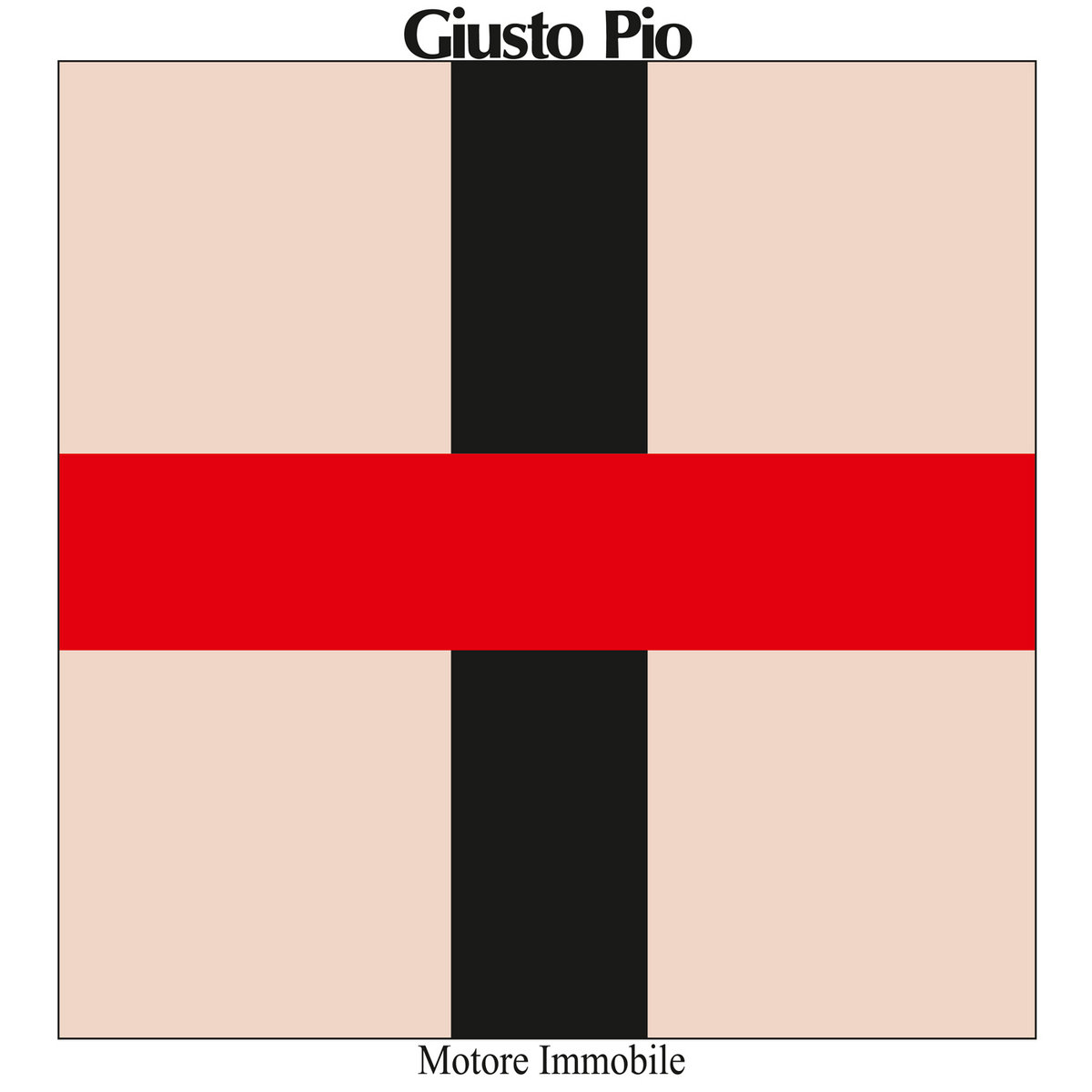
The recent news of the death of Franco Battiato drew me to Giusto Pio’s solo debut album, a classic of Italian minimalism. Produced by Battiato in 1979 and first released on Cramps records, Motore Immobile was generally ignored before languishing in obscurity. The Soave label reissued the album on vinyl in 2017, the year of Pio’s passing, and issued a vinyl repress shortly before Battiato died: an appropriate symmetry for two men who worked so beautifully together. The quality of their musicianship and compositional skill is such that, with simple organ drone, modest voice, delicate violin, and resonant piano, a vivid and sacred impression is created.
There is no law against trying to describe the subtle mystery and calm in this magnificent recording, but there probably ought to be. Let me first, then, defer to an expert writer on minimalism to succinctly describe those elements that Pio uses to achieve so much. As Alan Licht says "on the first side/title track, he uses a droning organ and moves very calmly from triad to triad, superimposing the next one briefly before moving on, occasionally expanding the sound with octave doubling and then just as quickly subtracting the lower tones. Intermittent humming and violin provide additional notes. On the second side, 'Ananta,' he uses a piano flourish to introduce each triad, landing on the tonic note each time."
The organ on the title track is played by Danilo Lorenzini and Michele Fedrigotti. Giusto Pio himself adds violin, and Martin Kleist doesn’t so much sing as hum almost beneath the surface of consciousness. Pio's violin playing has the care and precision of a sculptor or surgeon, shaping the music, and paring it down to bare bones. Matching the human voice with the organ drones produces a profound and spiritual harmony. Earlier in life I found the organ (in church) overpowering. It seemed at times to obliterate the congregation, as might a tool of class-based domination. While achieving a stunning musical purity, Motore Immobile also preserves the importance of the human voice. I have now come to love the organ, and recent works such as Kali Malone's The Sacrificial Code, where the instrument appears to be alive and breathing, have helped with that. For Pio's second piece, "Ananta," Lorenzini plays organ and Fedrigotti switches to piano. It too is an unforgettable work, dazzling as sunlight hitting colored glass objects in a Venetian shop window. Motore Immobile has a place among other classics of the period, such as Roberto Cacciapaglia's Sei note in logica (1979), Luciano Cilio's Dialoghi Del Presente (1977), and Franco Battiato's L’Egitto Prima Delle Sabbie (1978) that is assured for all time.
Read More
- Anthony D'Amico
- Albums and Singles
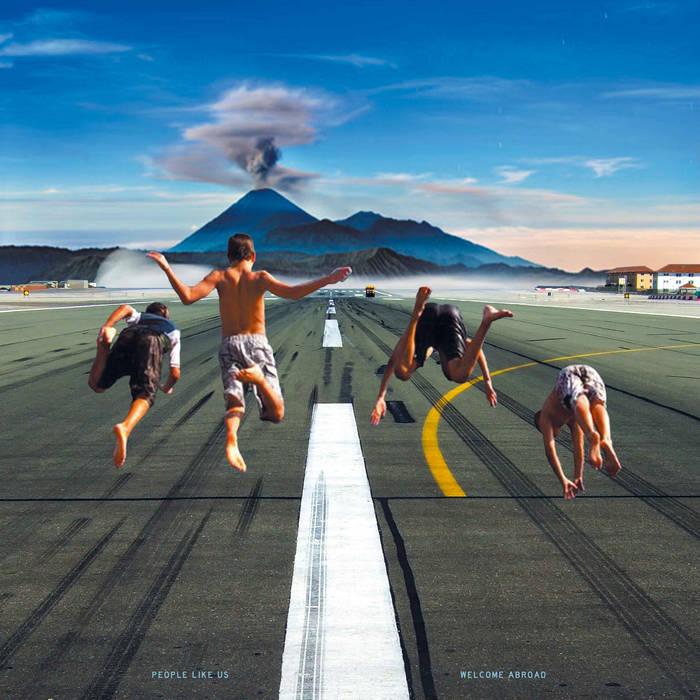 I was a bit surprised to see this album getting the "10-year-anniversary deluxe vinyl reissue" treatment, as I did not remember it making a particularly big splash when it was first issued on Illegal Art back in 2011. Then again, I would be hard-pressed to think of any album in the "plunderphonics" milieu that has made a big splash in the last two decades, as existing in a legal gray area in a litigious world is not exactly optimal for promoting records. In any case, I missed this album the first time around because I mistakenly thought that I was already reasonably familiar with Vicki Bennett's work and found it charming, fun, and clever, but not quite something that destined to deeply move me or blow my mind. As it turns out, I was very wrong about that, as this album reaches some truly dazzling and remarkably poignant heights. While I do regret that I could have spent the last decade regularly enjoying this magnum opus, Welcome Abroad actually feels like a perfect album to experience for the first time in 2021, as it was recorded while Bennett found herself unexpectedly stranded in the US due to the Iceland volcano's impact on air travel. Consequently, Bennett was preoccupied with themes of "displacement" and "a longing for elsewhere," which are themes that feel especially universal and powerful in light of the last couple years. And, of course, there is no one better at transforming recontextualized fragments of pop culture ephemera into a life-affirming phantasia of mischievous joie de vivre than Vicki Bennett.
I was a bit surprised to see this album getting the "10-year-anniversary deluxe vinyl reissue" treatment, as I did not remember it making a particularly big splash when it was first issued on Illegal Art back in 2011. Then again, I would be hard-pressed to think of any album in the "plunderphonics" milieu that has made a big splash in the last two decades, as existing in a legal gray area in a litigious world is not exactly optimal for promoting records. In any case, I missed this album the first time around because I mistakenly thought that I was already reasonably familiar with Vicki Bennett's work and found it charming, fun, and clever, but not quite something that destined to deeply move me or blow my mind. As it turns out, I was very wrong about that, as this album reaches some truly dazzling and remarkably poignant heights. While I do regret that I could have spent the last decade regularly enjoying this magnum opus, Welcome Abroad actually feels like a perfect album to experience for the first time in 2021, as it was recorded while Bennett found herself unexpectedly stranded in the US due to the Iceland volcano's impact on air travel. Consequently, Bennett was preoccupied with themes of "displacement" and "a longing for elsewhere," which are themes that feel especially universal and powerful in light of the last couple years. And, of course, there is no one better at transforming recontextualized fragments of pop culture ephemera into a life-affirming phantasia of mischievous joie de vivre than Vicki Bennett.
The best way to describe the Welcome Abroad experience is that it feels like a once-great Broadway director bottomed out and attempted to make a comeback with a razzle-dazzle, star-studded extravaganza about homesickness. Unfortunately, they needed cash and all of the willing investors had VERY strong and VERY specific opinions about the tone of the production. Miraculously, the director somehow succeeded in making something dazzling and beautiful, but it absolutely bulged with disorientingly absurd and kitschy leaps between '70s pop hits, vintage cartoons, Weimar Republic cabaret, cowboy movies, easy listening crooners, family sing-a-longs, Bond movies, and campy children's television. And while the show may not perfectly hit the mark with every single number, its many showstoppers are deliriously kinetic, fiendishly clever, and sometimes hit much harder than one would expect from their deceptively cheery tone. The first such gem is "Happy Lost Songs," which sounds like a community theater tribute to John Denver that was infiltrated by a vocal jazz ensemble and several delightful Looney Toons characters. "The Look" is more of a slow burn, but the reward is well worth the journey, as a sultry cabaret chanteuse bleeds into a wistful '60s surfsploitation scene, then it all unexpectedly erupts into a spectacular celebration of AM Gold hits (with plenty of overlapping along the way). Elsewhere, "Ever" feels like a delirious swirl of classic ‘60s girl group heaven, while "Push The Clouds Away" resembles a heartbroken cowboy restlessly playing records while lamenting his loneliness. It is predictably strange and disorienting, but when the right record comes on, it feels crushingly poignant and soulful too. The closing "The Atlantic Conveyor" is yet another emotional depth charge, as the kitschy collision of The Beatles and a schmaltzy Las Vegas crooner melds into a surprisingly moving finale. Nearly everything about this album is both great and fun though, as my notes are riddled with phrases like "The Muppets throw a Mardi Gras Party," "someone gave Piper at the Gates of Dawn-era Syd Barrett a variety show," "Satie on Bald Mountain," and "a singin' and dancin' temper tantrum extravaganza." I think Vicki Bennett might be my favorite artist now. This album is brilliant.
Samples can be found here.
Read More
- Anthony D'Amico
- Albums and Singles
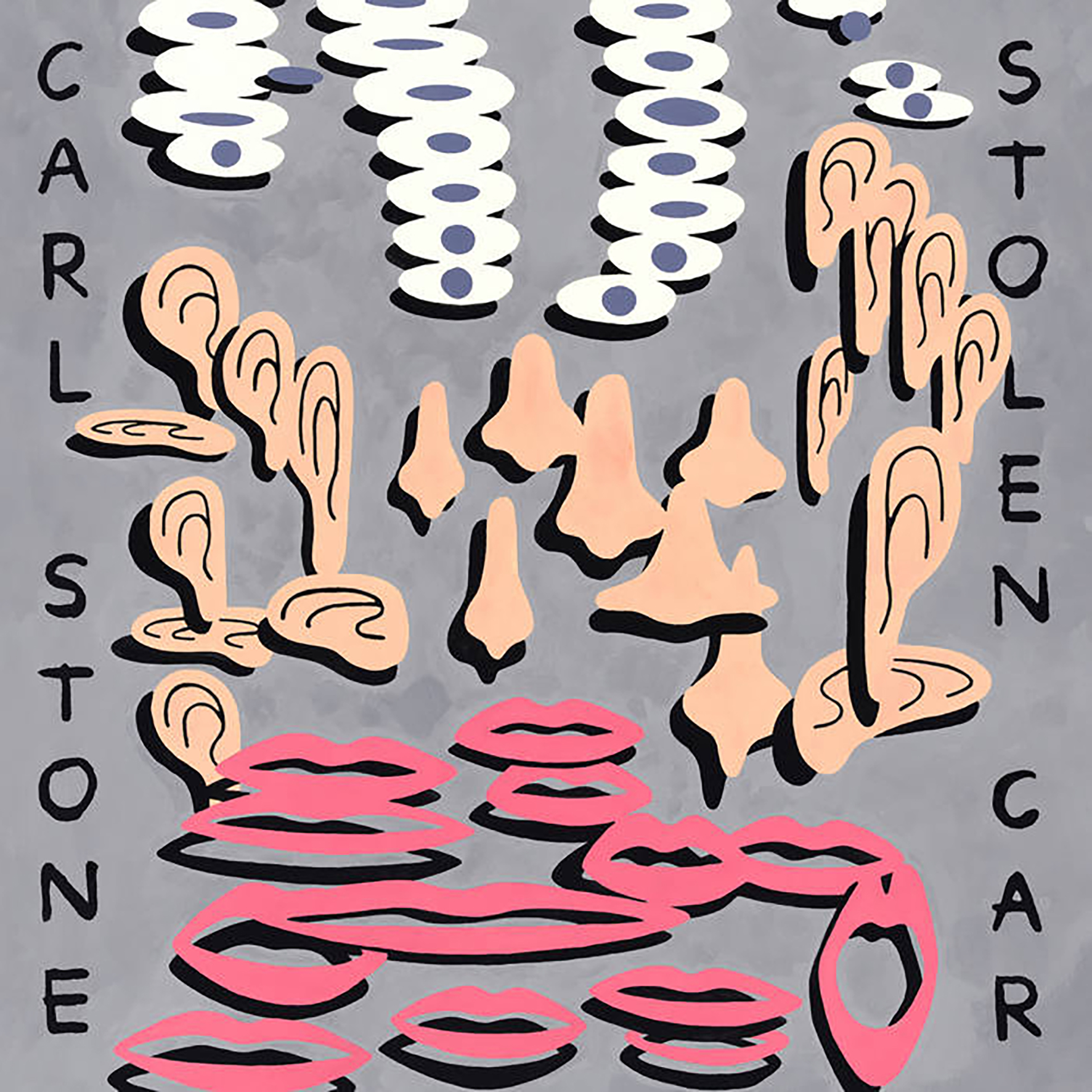 In theory, this album was released last September (which feels like a hundred years ago), but the LP only recently made its way into stores and distros, which is an increasingly familiar story these days. Fortunately, that long delay inspired me to revisit the album with fresh ears and I discovered that I actually liked it quite a lot more than I remembered. That statement deserves an asterisk though, as my earlier issue with Stolen Car was merely that I had already played the amazing Au Jus/The Jugged Hare and Ganci & Figli singles to death and those are probably the four best songs here. That unsurprisingly made the actual album a bit of an anticlimax, as my expectations were absolutely sky high and only those singles could meet them. Had I not already been extremely familiar with those four pieces, however, I suspect Stolen Car's release would have inspired me to run out into the street to grab random strangers by the shoulders and demand to know why they were just going about their mundane lives when they could be listening to this delirious, rapturous swirl of kaleidoscopic pop brilliance instead. On the bright side, not doing that may have spared me a night in jail, so I guess it all ultimately worked out. Admittedly, I still think this is a bit of an uneven album, but it is at least half of a masterpiece too, as I am hard-pressed to think of many people who can touch Carl Stone at the height of his powers (which he is frequently at here).
In theory, this album was released last September (which feels like a hundred years ago), but the LP only recently made its way into stores and distros, which is an increasingly familiar story these days. Fortunately, that long delay inspired me to revisit the album with fresh ears and I discovered that I actually liked it quite a lot more than I remembered. That statement deserves an asterisk though, as my earlier issue with Stolen Car was merely that I had already played the amazing Au Jus/The Jugged Hare and Ganci & Figli singles to death and those are probably the four best songs here. That unsurprisingly made the actual album a bit of an anticlimax, as my expectations were absolutely sky high and only those singles could meet them. Had I not already been extremely familiar with those four pieces, however, I suspect Stolen Car's release would have inspired me to run out into the street to grab random strangers by the shoulders and demand to know why they were just going about their mundane lives when they could be listening to this delirious, rapturous swirl of kaleidoscopic pop brilliance instead. On the bright side, not doing that may have spared me a night in jail, so I guess it all ultimately worked out. Admittedly, I still think this is a bit of an uneven album, but it is at least half of a masterpiece too, as I am hard-pressed to think of many people who can touch Carl Stone at the height of his powers (which he is frequently at here).
Carl Stone has certainly had a lengthy and fascinating career, but his recent work feels like it is on a different plane altogether and that plane is quite an endearingly fun and gleefully deranged place to be. In fact, it is a challenge to wrap my mind around the fact that the same man whose "jazz rock" band auditioned for Frank Zappa's label in the late '60s is also responsible for the opening "Pasjoli," which sounds like an Egyptian disco album being pulled apart by a black hole in the middle of an '80s hip hop block party. While it is not the best song on the album, "Pasjoli" does quite a fine job of laying down all of the album's themes in impressively vivid and dizzying fashion: from the first note to the last, Stolen Car is a manic, stammering, go-for-broke culmination of Stone's unique approach to cultural appropriation (absolutely everything is fair game and disorienting juxtapositions are both welcome and rampant). Aside from the four songs previously released as singles (the swirling, delirious pop cut-up "Figli" being the best), my favorite piece is "Bojuk," which feels like a soulful contemporary dance hit chopped into an unintelligible fragment language coupled with an anthemic hook that feels like it should have its own line dance. In general, the poppiest songs on Stolen Car are the best, but Stone's eccentric vision of "pop" feels like the entire history of The Eurovision Song Contest condensed into a single wild hallucination. Or perhaps like someone crammed Dexy's Midnight Runners, a classical quartet, a dance diva, a turntablist, and some yodelers into an elevator and told them they couldn’t leave until they recorded a hit together. I also enjoyed the divergent "Huanchaco," which resembles a tight fusion band remixed into jackhammering psychedelic lunacy by a maniac. Admittedly, there are also a handful of songs that do not quite hit the mark, but they are decisively outweighed by the great ones and Stolen Car as a whole sounds like a wildly pixelated and accelerated version of Jon Hassell's Fourth World aesthetic beamed back from twenty years in the future.
Samples can be found here.
Read More
- Administrator
- Albums and Singles
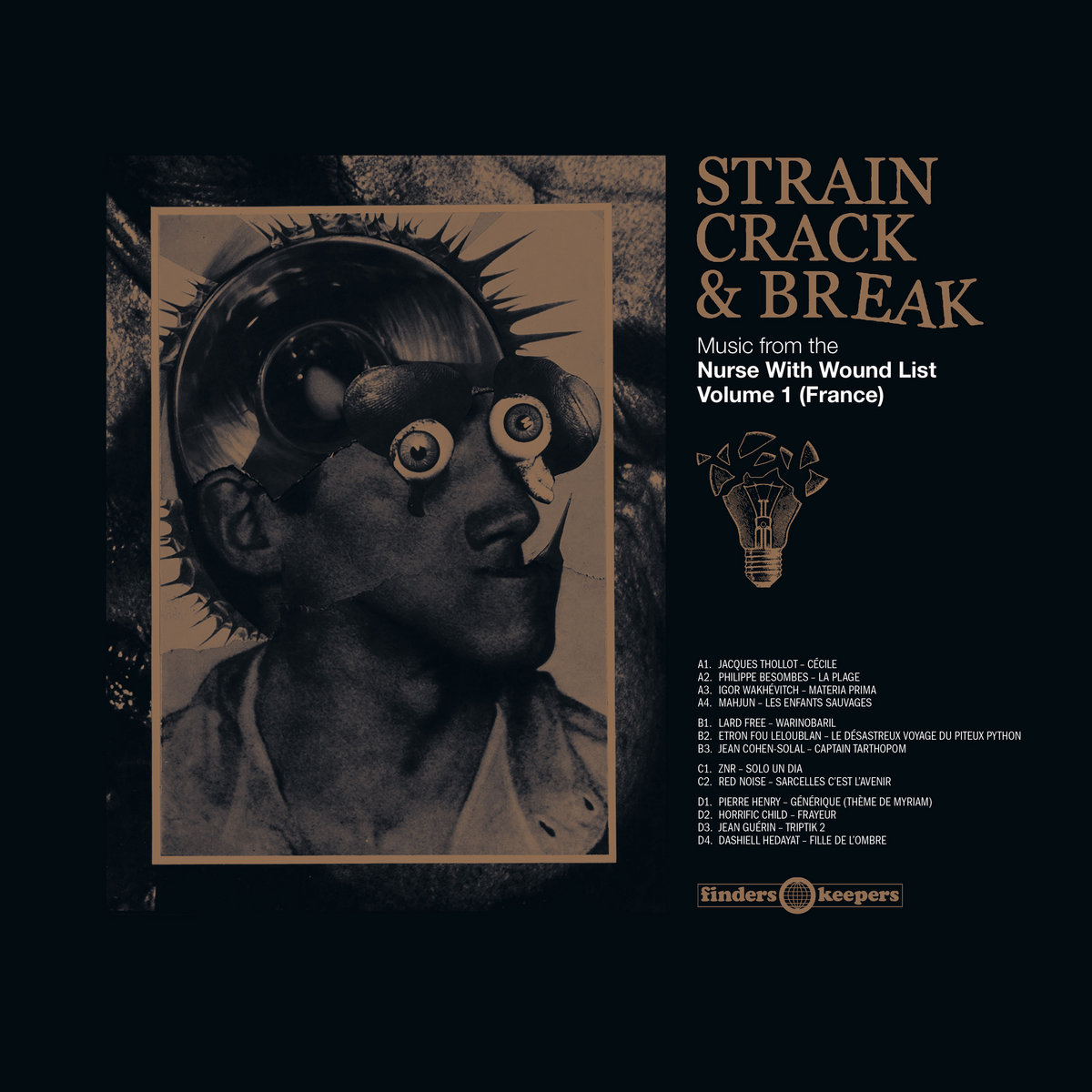 The Nurse With Wound List is a unique passport to musical discoveries located beyond the horizon of well-trodden flat Earth popular culture. NWW's founder member and sole curator, Steven Stapleton, has teamed with the Finders Keepers label to issue one track by every artist mentioned in the directory of obscurity. The second edition (Germany) is highly anticipated, but this first volume announces a high standard with gems including those from Horrific Child, Jean Guérin, Lard Free, Pierre Henry, and ZNR. Compilation albums can tend to be patchy, but this one is a consistent gift, probably because it originates from a lengthy real world exploration, the kind of which will never be replicated by any amount of fast clicking through the digital haystack. The Strain Crack & Break series is going to confound the expectations of seasoned crate diggers and newcomers alike.
The Nurse With Wound List is a unique passport to musical discoveries located beyond the horizon of well-trodden flat Earth popular culture. NWW's founder member and sole curator, Steven Stapleton, has teamed with the Finders Keepers label to issue one track by every artist mentioned in the directory of obscurity. The second edition (Germany) is highly anticipated, but this first volume announces a high standard with gems including those from Horrific Child, Jean Guérin, Lard Free, Pierre Henry, and ZNR. Compilation albums can tend to be patchy, but this one is a consistent gift, probably because it originates from a lengthy real world exploration, the kind of which will never be replicated by any amount of fast clicking through the digital haystack. The Strain Crack & Break series is going to confound the expectations of seasoned crate diggers and newcomers alike.
Nurse With Wound’s 1979 debut Chance Meeting on a Dissecting Table of a Sewing Machine and an Umbrella was recorded in six hours and the general reaction can best be described as underwhelmed bemusement. UK music weekly Sounds awarded it ????? instead of using their normal 1-5 stars rating system. The title comes from the surrealist book Les Chants de Maldoror, and NWW dedicated the album to the Nihilist Spasm Band and also Luigi Russolo (author of the Futurist manifesto The Art Of Noises). However, the infamous reputation of Chance Meeting is chiefly due to it containing a list of NWW's favorite uber-obscure artistic influences and inspirations. This idea was taken from an album by German free jazz artist Wolfgang Dauner. Stapleton and co-author John Fothergil argued for months, culling choices from around eight years of rabid record collecting. In Stapleton’s case, this began in 1971 aged 14, when he bought his first Amon Düul album. The pair scoured Soho, and traveled through the UK and Europe scouring second hand shops for anything deemed original or boundary shattering. By 17, Stapleton was living at sound engineer Conny Plank’s house and working as roadie for the band Guru Guru. France is thus a tiny sample of a vast, doggedly idiosyncratic, collection.
The opening two pieces plunge into atmospheres markedly removed from hearing human beings play music. Imagine falling into a dream where a surreal movie flickers in a darkened theater, or more accurately into a daytime wide awake trance. Throughout, most of the pieces are fascinating rather than uncomfortable. For example the utterly charming "Solo un Dia" by ZNR (a so-called "chamber rock" duo fond of short songs inspired by Erik Satie). Incidentally, ZNR's Barricade 3 album featured artwork by Don van Vliet. Another similar treasure, Pierre Henry’s brilliantly doleful "Generique (Theme de Myriam)" sounds like the square root of Sun City Girls’ Funeral Mariachi album. A lengthier and more dynamic piece, Horrific Child’s "Freyeur" is a cut-up smorgasbord of psychotic tribal prog-funk that gives way to urban film theme, hypnotic Burundi breath-chant, grunting rock riffing, township stomp-clap vibe, and throaty Arabic whispering-in-a-sandstorm invocations blowing up a parched desert-blues twang. By contrast, Lard Free appear to be strolling down the same boulevard as Melody Nelson with cool bass and siren-like blasts of sax, only to be interrupted by slabs of crunching guitar. It is rather like when you’re listening to a cool track online which improves when your computer suddenly kicks in with an unrelated song from your music library.
These selections are "old friends" for Stapleton, and if we newcomers should not expect to love them as much as he does, the majority sound amazingly fresh after almost half a century. My least favorite track, a nonsensical glue-and-string circus of maddening vocal announcements and squawking plastic horns splattered with faux applause, at least has undeniable high energy and plenty of legitimate swagger. I resisted any temptation to skip tracks and felt the coherence of the album and that the running order flows so well that this could almost be an album by one artist. Apparently Dashiell Hedayat is backed by some members of Gong for "Fille De L’Ombre" - a suitably weird penultimate piece with an underground vibe, by which I mean it feels as if we are in catacombs beneath a city, or wading through a sewer. Jean Guérin’s "Triptik 2" from his fantastic album Tacet, is a fitting end to this short visit to the France of someone else’s dreams. In this dreamlike place I can but flail around for descriptors: free jazz experimentation, genre-eclipsing exoticism, bleeping electronic strangeness, indescribable, bizarre, melodic, space nightmare, earthy day dream.
The NWW list has undeniably aged well. After being totally ignored it has gradually become a cult reference point. While the list does not specify the work of the artist included, prices for some of their rare vinyl have risen astronomically. Stapleton has sold all but 1000 of the original rarities he collected, and he's built a house in Ireland (near the Father Ted house) with the proceeds. That would be an ecumenical matter. Coincidentally, I bought my first record in 1971 and remember the hunger to find new sounds and a need to distance myself from dull ubiquitous options. At one point, to throw off an annoying hanger-on, a group of school friends and I invented a group called Horizon. We would rave knowingly about non-existent Peel sessions, bootleg cassettes, or late night television appearances. I am unrepentant about that. I doubt the target of our minor teenage cruelty was, or still is, a music obsessive; more likely he now plays golf, works in law, and earns 10 times the national average. Part of me expected to find Horizon on the NWW list.
Read More
- Anthony D'Amico
- Albums and Singles
 Saltern’s latest Yoshi Wada reissue unhappily coincides with the composer's unexpected passing, but at least he managed to live long enough to see his work get some wider appreciation in recent years. Or at least managed to see some of his major albums finally get remastered and released outside Japan, as "wider appreciation" is very relative when one's vision is as unapologetically challenging as Wada's. In fact, I always viewed him as a Final Boss in the appreciation of difficult and adventurous music, as it takes a lot of immersion in dissonant and outré sounds before one reaches the "I crave a deep dive into avant-garde bagpipes" stage. In fact, I am not sure I am yet there myself. Given that, The Appointed Cloud is probably more for devout connoisseurs of sound art's more prickly fringes than, say, the heavy drone of Wada's 2009 triple LP Earth Horns With Electronic Drone. However, this album was one of Wada's personal favorites, as it documents the "memorable" opening performance of his "first large-scale, interactive installation" at the Great Hall of the New York Hall of Science in 1987 (which featured "spaceships hanging from the ceiling so people felt like they were traveling in outer space"). That certainly seems like a suitably disorienting environment for sounds this fascinating and unique. I dearly wish someone had thought to film some post-concert audience reactions, as I bet they were quite something.
Saltern’s latest Yoshi Wada reissue unhappily coincides with the composer's unexpected passing, but at least he managed to live long enough to see his work get some wider appreciation in recent years. Or at least managed to see some of his major albums finally get remastered and released outside Japan, as "wider appreciation" is very relative when one's vision is as unapologetically challenging as Wada's. In fact, I always viewed him as a Final Boss in the appreciation of difficult and adventurous music, as it takes a lot of immersion in dissonant and outré sounds before one reaches the "I crave a deep dive into avant-garde bagpipes" stage. In fact, I am not sure I am yet there myself. Given that, The Appointed Cloud is probably more for devout connoisseurs of sound art's more prickly fringes than, say, the heavy drone of Wada's 2009 triple LP Earth Horns With Electronic Drone. However, this album was one of Wada's personal favorites, as it documents the "memorable" opening performance of his "first large-scale, interactive installation" at the Great Hall of the New York Hall of Science in 1987 (which featured "spaceships hanging from the ceiling so people felt like they were traveling in outer space"). That certainly seems like a suitably disorienting environment for sounds this fascinating and unique. I dearly wish someone had thought to film some post-concert audience reactions, as I bet they were quite something.
Saltern/EM Records/Edition Omega Point
There are some artists who seem like that they have absolutely no influences other than themselves, but there are also some equally rare visionaries who combine such bizarre and seemingly clashing influences that they seem equally unique. Yoshi Wada was arguably the king of the latter camp, as he began his creative life studying sculpture in Kyoto before moving to New York in the '60s and falling in with the burgeoning Fluxus scene there. He also studied composition with La Monte Young, North Indian classical singing with Pandit Pran Nath, and Scottish bagpipes. That impressive collision of jarringly divergent impulses makes sense if one simply accepts that Wada was a deeply curious person though. And The Appointed Cloud similarly makes sense if one understands that sculpture was Wada's first love and that Fluxus showed him a path to applying those talents to music, as one of its primary themes is emphasizing the artistic process over the finished product. Appropriately, process lies at the heart of this performance, as it is a based around "a custom pipe organ, among other homemade instruments, controlled by a computer equipped with a customized interface and software designed by engineer David Rayna." The ensemble is further rounded out by four bagpipe players (one of whom was Wada) and a percussionist. All of those elements make their presence strongly felt at various points, but most of the album sounds like a very tight and professional bagpipe ensemble with one rogue member who keeps steering them towards crescendos of squalling dissonance (and it also sounds like he may have invited some friends from a gagaku ensemble along). It also occasionally sounds like a pipe organ jam at a Zen retreat, an air raid drill during a mass at a cathedral, a flock of crazed geese fleeing a storm, or an appealingly frayed and out-of-phase Philip Glass homage. Needless to say, that makes for quite a wild and unpredictable ride and it is not one for the timid: Yoshi Wada was truly a one-of-a-kind artist and The Appointed Cloud is exactly the sort of ambitiously challenging and strikingly unfamilar album to (emphatically) affirm that.
Samples can be found here.
Read More
- Creaig Dunton
- Albums and Singles
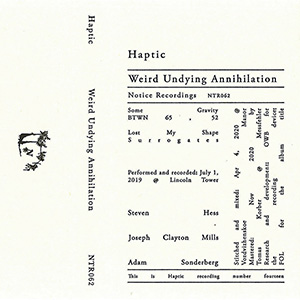 Recordings of sound art installations are always a bit troublesome, since it is an attempt to distill a spatial experience into a (usually) two channel stereo recording, meaning something is lost in translation. The latest work from the trio of Steven Hess, Joseph Clayton Mills, and Adam Sonderberg combines the intent and structure of an installation, but in the form of a live performance where each performer performed within their own specific space, and specifically intended for an external listening experience. While that may sound convoluted, it results in a tape that features an amazing sense of space and movement, even if it is just a recording.
Recordings of sound art installations are always a bit troublesome, since it is an attempt to distill a spatial experience into a (usually) two channel stereo recording, meaning something is lost in translation. The latest work from the trio of Steven Hess, Joseph Clayton Mills, and Adam Sonderberg combines the intent and structure of an installation, but in the form of a live performance where each performer performed within their own specific space, and specifically intended for an external listening experience. While that may sound convoluted, it results in a tape that features an amazing sense of space and movement, even if it is just a recording.
The spatial element of this material is undeniable from the opening moments of "Some Gravity." The trio cover subtle electronic tones with churning static and deep blasts of three-dimensional sound. It is extremely active, complex, and challenging without being harsh or oppressive. The use of droning tonal elements on "BTWN 65, 52" beautifully contrasts the reversed stutters and fragments that are all covered by what sounds like the deep rumble of a passing train.
The trio leans heavier into rhythmic elements on the other side of the cassette, albeit in the most abstracted form possible. "Lost My Shape" is a multilayered noise experience that is distinctly anchored by clicks, thumps, and dull thuds that certainly sound percussive in nature, but hardly resemble anything close to a drum. The final piece, "Surrogates" has the ambience of being within a large idling machine, complete with external banging and clattering, but a subtle piano motif stays prominent throughout, providing an excellent contrast.
Pandemic recordings are a concept that is already becoming cliché, but Haptic (intentionally or not) have created a perfect one with Weird Undying Annihilation. By so deftly capturing the experience of both live recordings and dynamic sound installations into a format that can be fully appreciated in complete isolation. It is an excellent substitute while standing completely on its own strengths, and never just seeming like a "best approximation" of the live, spatial context. The depth and complexity of these recordings is astounding, and the trio do an unbelievable job of capturing both place and motion in only two channels of sound.
Samples can be found here.
Read More
- Creaig Dunton
- Albums and Singles
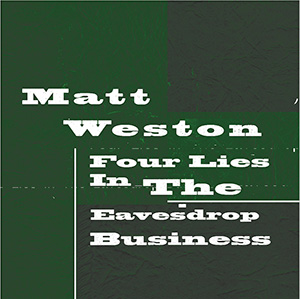 The latest run of releases from Albany NY’s Matt Weston have been growing consistently in scope and length. After a slew of 7" releases, there was the 2019 12" EP A New Form of Crime, the LP Tell Us About Your Stupor from last year, and now this double record. Four Lies is an excellent progression, as Weston has filled the expanding formats with even more creative and unique sounds. On Four Lies his use of varied electronic treatments continues, but the integration of more of his percussive expertise makes it all the better.
The latest run of releases from Albany NY’s Matt Weston have been growing consistently in scope and length. After a slew of 7" releases, there was the 2019 12" EP A New Form of Crime, the LP Tell Us About Your Stupor from last year, and now this double record. Four Lies is an excellent progression, as Weston has filled the expanding formats with even more creative and unique sounds. On Four Lies his use of varied electronic treatments continues, but the integration of more of his percussive expertise makes it all the better.
Weston comes out heavy with "We Are Armed," with laser bagpipe electronics and erratic cut up drum recordings rushing to the forefront. It is extremely kinetic, full of cut and paste sound layers and clattering incidental noises throughout, but there is clear order to the chaos, as Weston shifts from tumbling drums to layered non-traditional rhythms and haunted house moods. "Celluloid Caller" has a recurring, oddly bouncy melody throughout, as processed voices and harsher noise explosions cut through a massive wall of reverb, mixing heavier moods with almost jaunty melodies.
"You Tried to Fix the Paranoia," the opening of the second disc, is a bizarre mix of gurgling electronics and sharp, chirpy outbursts. Weston presents grinding string sounds and insectoid passages with bent voices and heavy reverbs once again, resulting in an extremely alien, unnatural sounding work. The following "Solitary Vulture" is the opposite: a wide expanse punctuated by a far off pleasant tone, then watery passages of calmness. Things are all well and good until Weston decides to add in some jarring feedback stabs, however.
All of the final side is taken up by "Fear of Insomnia," which is fitting given the dramatic nature of the piece. Dramatic drums and what sounds like horns (or an approximation thereof) appear immediately within the expansive, spacious mix. Grinding low end and shimmering passages nicely blend the dark and the light elements of Weston’s sound. Eventually an untreated drum passage becomes the focus, anchoring everything in a perfect krautrock complex rhythm. Drifting, droning electronics supplement the driving beat, culminating in an intense beauty. Later on he adds just a bit of delay that throws everything off kilter, turning up the intensity and making for even more chaos as the set concludes.
I would hesitate to use the term "sprawling" to describe Four Lies, but Weston covers a lot of bases across all four sides of the album. Historically, his work covers so much ground, from jazz influenced structures to heavy electronics to rhythmic experimentation, and all of that can be found within this one release. Defying categorization, Weston channels a bit of everything: playfulness, malevolence, tone, texture, noise, melody and so much more, and manages to distill it all into one album with a virtuoso’s touch.
Samples can be found here.
Read More
- Anthony D'Amico
- Albums and Singles
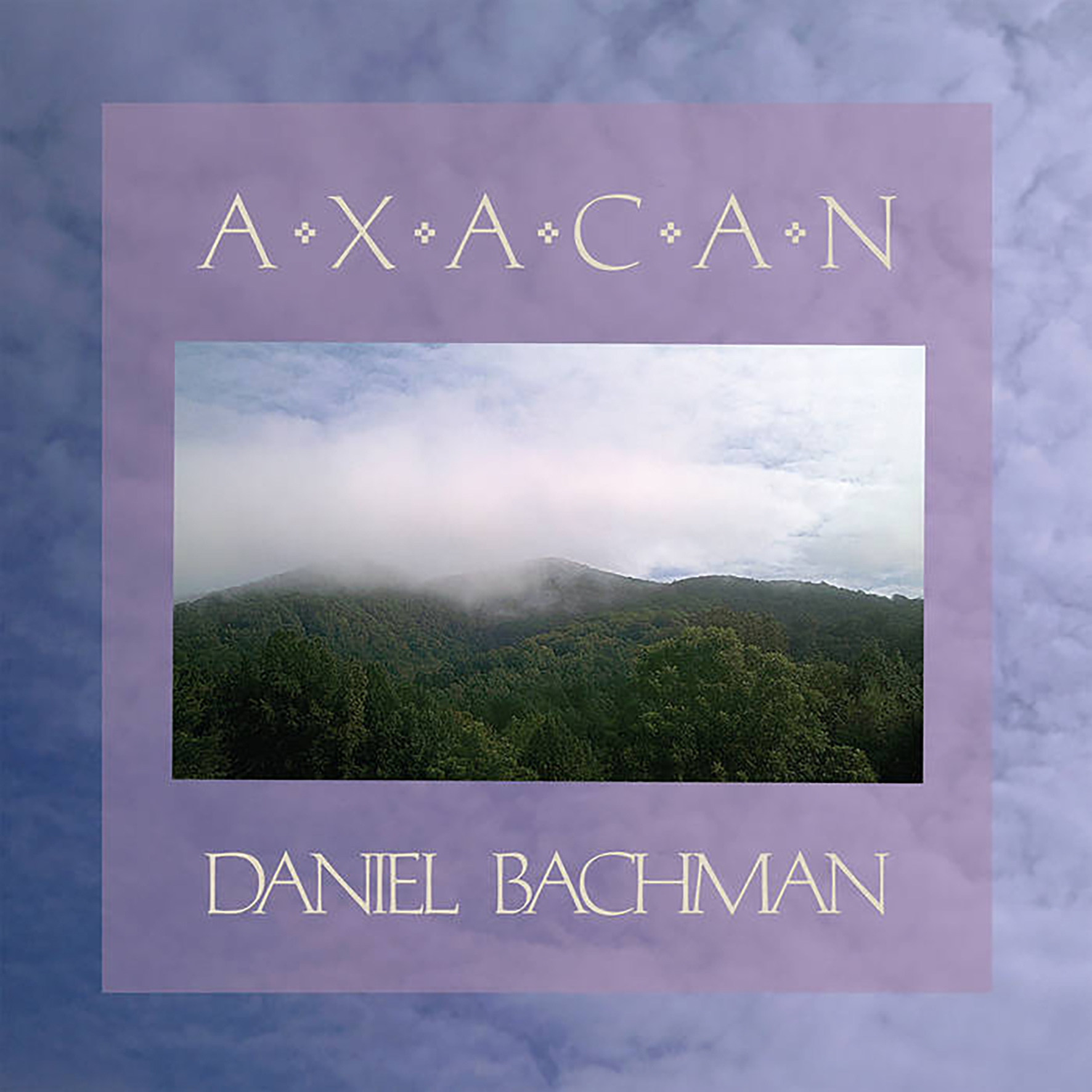 I have been aware of Daniel Bachman's work for quite some time, as he has always been one of the more reliably excellent and virtuosic artists in the post-Fahey "American Primitive" milieu, but I was apparently not paying nearly enough attention to notice how far he had evolved beyond that scene in recent years. I believe Bachman first started to conspicuously head in this more psych-minded and abstract direction with 2016's self-titled release, so I suppose I have some catching up to do, yet Axacan is the album that is currently being hailed as a masterpiece so it seemed like a good place to start. Amusingly, I think it might actually drift too far from Bachman's instrumental prowess to land in my own personal pantheon of masterworks, but it is certainly one hell of a bold, surprising, and radical release. To my ears, it resembles some kind of impressionistic and hallucinatory "found footage" diary of unsettling sound collages far more than it does a guitar album. In fact, Axacan so vividly evokes disjointed, elliptical, and poetic scenes from the aftermath of an apocalypse that it calls to mind a classic George Romero zombie film as reimagined by Terrence Mallick.
I have been aware of Daniel Bachman's work for quite some time, as he has always been one of the more reliably excellent and virtuosic artists in the post-Fahey "American Primitive" milieu, but I was apparently not paying nearly enough attention to notice how far he had evolved beyond that scene in recent years. I believe Bachman first started to conspicuously head in this more psych-minded and abstract direction with 2016's self-titled release, so I suppose I have some catching up to do, yet Axacan is the album that is currently being hailed as a masterpiece so it seemed like a good place to start. Amusingly, I think it might actually drift too far from Bachman's instrumental prowess to land in my own personal pantheon of masterworks, but it is certainly one hell of a bold, surprising, and radical release. To my ears, it resembles some kind of impressionistic and hallucinatory "found footage" diary of unsettling sound collages far more than it does a guitar album. In fact, Axacan so vividly evokes disjointed, elliptical, and poetic scenes from the aftermath of an apocalypse that it calls to mind a classic George Romero zombie film as reimagined by Terrence Mallick.
After experiencing Axacan for the first time, I went back and listened to some other recent Bachman albums, as I was very curious to see when he started making such a decisive break from his earlier work. In doing so, I discovered that Bachman had already released the masterpiece that I was hoping for with 2018's The Morning Star. Having achieved that, he apparently decided to head into far weirder and darker terrain with Axacan, which certainly would have felt appropriate at the time (it was recorded in the first half of 2020). Notably, Axacan does not particularly sound like an album made by a guitarist beyond the churning and chiming tour de force "Coronach." Instead, it feels like a series of enigmatic and fragmented memories from a traumatic period (if not scenes from an actual horror movie) in which someone is occasionally playing or tuning a guitar. That dark and hallucinatory trip starts innocently enough, however, as "Accokeek Creek" opens with the hissing sounds of suburban lawn sprinklers, but an escalating undercurrent of ominous murk soon culminates in a ravaged dictaphone recording of someone announcing the day's date. The descent into nightmare terrain from there is initially somewhat slow and subtle, but "Ferry Farm" transforms a nocturnal chorus of chirping frogs into a lysergic jungle of terror. In fact, it ends with the sound of a car door opening and an engine starting, suggesting that someone is hurriedly fleeing an encroaching horror. Apparently they made it, as the next scene ("Blue Ocean 0") materializes as a droning harmonium on a desolate, windswept beach before the focus shifts to someone paddling slowly out to sea. Once I reach the island, however, it feels like I have been sucked into a wobbly VHS tape of someone's family vacation and everything only grows exponentially more phantasmagoric from there. In the remaining pieces, I am treated to a parade of creepy and surreal sounds alternately resembling ominous radio transmissions, eerie moans of massive shipwrecked hulls, fireworks in a deep cave, a subterranean helicopter, an approaching motorboat, cows startled by a volcano, smoldering ruins, and a chorus of ghostly owls. It all amounts to quite a haunting, vivid, and unsettlingly ambiguous and fragmented mindfuck (and one that sucks me in deeper every time I listen). This will absolutely be the finest headphone album of the year.
Samples can be found here.
Read More
- Anthony D'Amico
- Albums and Singles
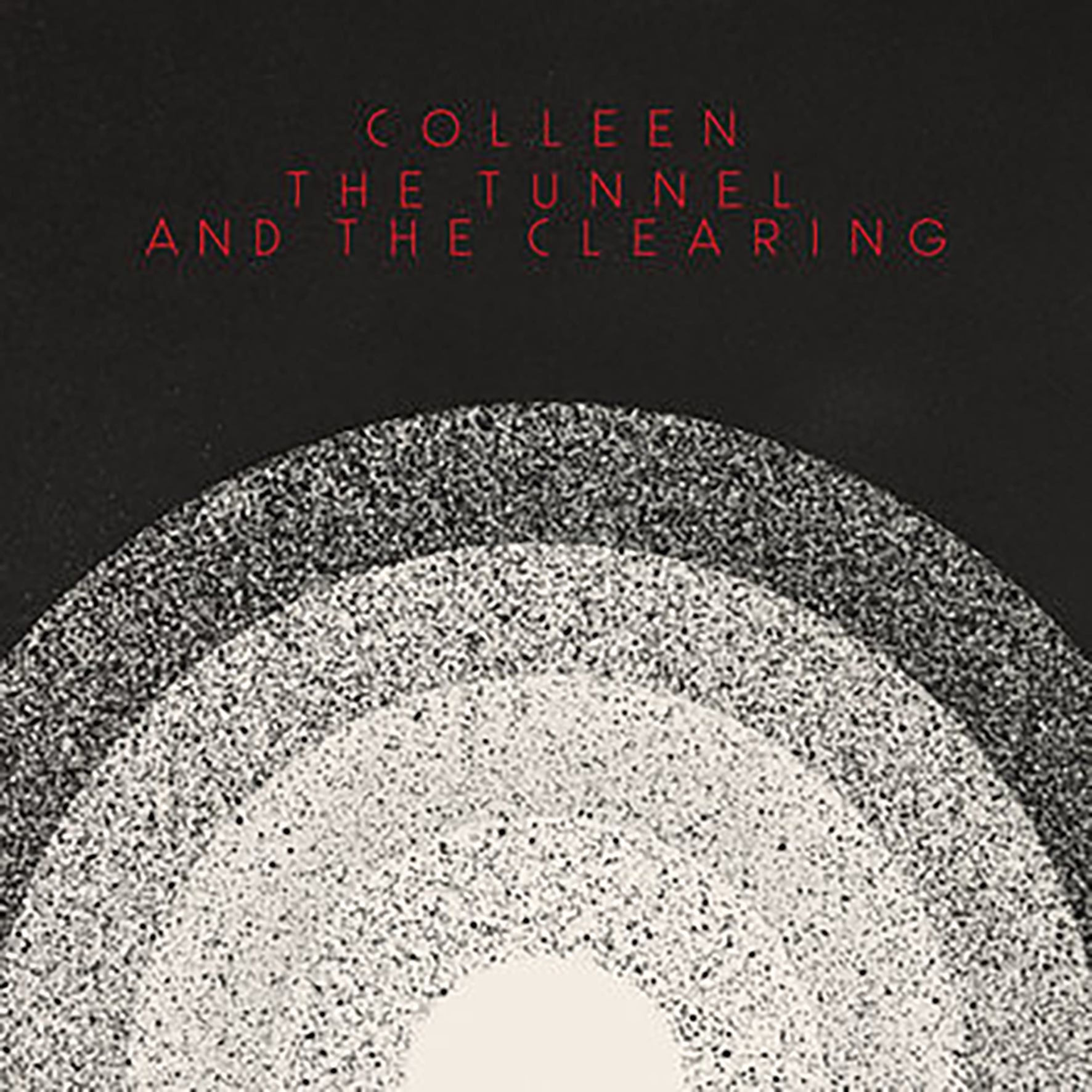 It has been nearly four years since the last Colleen album, which is certainly not the first lengthy gap in Cécile Schott's wonderful discography, but she definitely seemed to be thriving and experiencing a creative renaissance since signing to Thrill Jockey. As it turns out, that hiatus was far from intentional, as Schott has been plagued by quite an impressive run of personal misfortunes and upheavals since A Flame My Love, A Frequency was released (some of which certainly inform the album's searching lyrical themes). While I do not subscribe to the "suffering inspires great art" myth, I do think the long break between albums allowed Schott enough time, solitude, and introspection to make The Tunnel and the Clearing far more of a leap forward than it may have been otherwise. It does share its predecessor's conspicuous lack of viola de gamba though, as Schott remains committed to exploring the potential of just a simple synthesizer and a few well-chosen pedals. That similarity aside, this latest opus sounds completely different than any other Colleen album, as it feels like Schott just invented her own incredibly cool strain of organ-driven hypnagogic pop (and one fitfully enlivened by delightful Latin rhythms, no less). In fact, I briefly wondered if she had somehow managed to customize a synthesizer to be played with a bow. This is unsurprisingly yet another excellent Colleen album.
It has been nearly four years since the last Colleen album, which is certainly not the first lengthy gap in Cécile Schott's wonderful discography, but she definitely seemed to be thriving and experiencing a creative renaissance since signing to Thrill Jockey. As it turns out, that hiatus was far from intentional, as Schott has been plagued by quite an impressive run of personal misfortunes and upheavals since A Flame My Love, A Frequency was released (some of which certainly inform the album's searching lyrical themes). While I do not subscribe to the "suffering inspires great art" myth, I do think the long break between albums allowed Schott enough time, solitude, and introspection to make The Tunnel and the Clearing far more of a leap forward than it may have been otherwise. It does share its predecessor's conspicuous lack of viola de gamba though, as Schott remains committed to exploring the potential of just a simple synthesizer and a few well-chosen pedals. That similarity aside, this latest opus sounds completely different than any other Colleen album, as it feels like Schott just invented her own incredibly cool strain of organ-driven hypnagogic pop (and one fitfully enlivened by delightful Latin rhythms, no less). In fact, I briefly wondered if she had somehow managed to customize a synthesizer to be played with a bow. This is unsurprisingly yet another excellent Colleen album.
For this latest release, Schott set aside her Critter and Guitari synths and opted for the surprisingly small and inexpensive Yamaha Reface YC, which she primarily uses to mimic an organ. While that warmer tone certainly suits Schott's hushed and understated aesthetic quite nicely, the stars of The Tunnel and the Clearing are frequently the various echo and delay pedals that she so brilliantly employs (and possibly her vintage drum machine as well). That is not to say that the songs are not also strong, but these seven pieces are quite simple, spartan ones and their primary beauty lies in how Schott wields effects to make her melodies organically wobble, ripple, smear, and overlap. That approach makes everything feel hazy and disorientingly out-of-phase in a lovely way that nicely complements the album's fun and sultry drum machine grooves. Most of the strongest pieces come near the beginning of the album, as there is an especially great three-song run after the shuffling and thumping instrumental opener. In "Revelation," Schott quietly sings a tender melody over a pulsing and spacey backdrop, but it slowly dissolves into woozy ambiance that later builds into a beeping psych crescendo. My favorite piece is the charmingly tropical-sounding "Implosion-Explosion," which sounds like Stereolab and Yo La Tengo turned up for all-star beach party jam, while the title piece is a synth instrumental that feels like an Emeralds song freed from its structure and allowed to spiral off into soft-focus bliss. The final three pieces get a bit more eclectic, as the two-part "Gazing at Taurus" initially sounds like an '80s Euro pop chanteuse backed by a shimmering cloud, then becomes a hypnagogic twist on "cruise ship lounge band." "Hidden in the Current," on the other hand, almost veers into proggy indulgence, but is arguably saved by its psychotropic, oscillating drones. While I certainly commend Schott for her adventurousness, the best thing about this album is the same as the best thing about every Colleen album: her singular gift for crafting understated, intimate, and precariously dream-like glimpses of pop heaven.
Samples can be found here.
Read More

